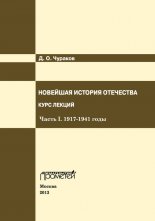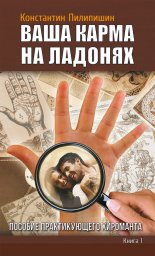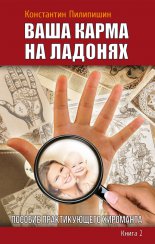Япония. Национальная идентичность и внешняя политика. Россия как Другое Японии Бух Александр

Hasegawa, C. (1993) «Ajia to nihon» «21seki no nihon» («Asia and Japan», «Japan of the 21st Century). IN HASEGAWA, C. (Ed.) «Ajia to nihon» «21seki no nihon». Osaka, Asahi Shimbunsha.
Hashimoto, R. (1996) Akiyama Yoshifuru to no en (The fateful encounter with Akiyama Yoshifuru.) IN Shiba Roytaro no sekai (The world of Shiba Roytaro). Tokyo, Bungei shunj.
– (2000) Roshia to wa kanzen na paatonaashippu o (Towards a complete partnership with Russia.) Gaik Forum 13(13):30–35.
Hashimoto, S. (1987) Ainu jinken sengen no tameni (Towards Ainu human rights declaration). Sekai 499:265–279.
Hata, T. (1996) «Nana no hana no oki» ni manabu (Learing from the «Sea of Ripe blossoms»). IN Shiba Rytar no sekai (The world of Shiba Rytar). Tokyo, Bungei shunj.
Hatanaka, M. (1947) Sobueto to iu kuni (A country called the Soviet Union), Tokyo, Asahi Shimbunsha.
Hatoyama, Y. (2006) Hopprydo mondai ksh keiii to keizaikyryoku (The history of Northern Territories problem related negotiations and economic cooperation). Jiyu 48:33–43.
Hattori, M. (2006) 2005 nen no nichiro beki (Japan’s trade with Russia in 2005). Roshia t beki chsa geppo, 51:1–50.
Hayashida, H. (2004) Gendai ni ikiru nichiro sens (Living today the Russo-Japanese War). Yomiuri Shimbun 25 December 2004:12. Tokyo.
Hirano, K. (1985) Sengo nihon ni okeru «bunka» (The «culture» in post-war Japan). IN WATANABE, A. (Ed.) Sengo nihon no taigai seisaku (Japan’s post-wr foreign policy.) Tokyo, Yuhaikaku.
Hirayama, I. (1994) «94 nen nippon saiko» mosukuwa hatsu «mono» chshin no tainichi kan (‘94 Revisiting Japan: Moscow’s materialistic view of Japan). Sankei Shimbun 28 December 1994. Tokyo. Electronic edition. Accessed on 23 June 2005.
Hirooka, M. (2000) Roshia-nashonarizumu no seijibunka (Russia-the political culture of nationalism), Tokyo, Sbunsha.
Hisamatsu, Y. ([1893] 1990) Ainu ron (The debate about Ainu). IN Kat et al. Sabetsu no shos (Various aspects of discrimination). Tokyo, Iwanami shoten.
Hitachi, K. (2007) Roshia no taikokudo wo bunseki suru (Analyzing Russia’s degree of «great powerness») Roshia NIS Chsagepp, 52, 1–5.
Hokkaid Ch (Hokkaido Local Government). (1919) Hokkaid saikin jij (Recent situation of Hokkaido). Tokyo, Hokkaid Ch.
– (1927) Hokkaido gensei yran (Outline of the present conditions of Hokkaido). Sapporo, Hokkaido ch tokei ka (Statistics division of Hokkaido government).
– (1934) Chishima gaiky (Outline of the Kuriles). Sapporo, Hokkaid Ch.
Honda, K. (1933) Nichiro sens no shingi (The real meaning of the Russo-Japanese war). Nihon seishin kza (Lectures in Japanese spirit). Tokyo, Shinchsha.
Honda, R. (2002) Toozakaru hopprydo (Northern territories going further away). Sekai 702: 210–219.
Hoshiyama, T. (2007) Nihon no ajia gaik (Japan’s Asia Diplomacy). Tokyo, Institute for International Policy Studies.
Hyd, S. (2000) Renpo sisutemu kara mita shorai no roshia kokkazo (The future of the Russian State in terms of the federal system). NIDS Security Studies 3:65–79.
– (2003) Taminzoku renpo kokka roshia no yukue (Which way will go the multi-ethnic Russian Federation). Tokyo, Yurajia kenkyujo.
Ienaga, S. (1993) Misshitsu Kentei no Kiroku (Proceedings of the behind the closed doors certification process), Tokyo, Meich kankkai.
Imai, H. (1985) Kurashite mita soren 2000 nichi (2000 days of living in the Soviet Union), Tokyo, Kodansha.
Imano, K. (1990) Tokyo samitto to tairo shien (The Tokyo summit and assistance to Russia). Jiy 35(6):30–41.
Imoto, T. (2003) Nihon kigyo kara mita roshia WTO kamei mondai (Problems related to Russian entrance to WTO as seen from Japanese business). JBICI Working Paper. Tokyo, JBIC.
Iokibe, M. (1999) Sengo nihon gaikoshi (The diplomatic history of postwar Japan), Tokyo, Yuhaikaku.
Ishihara, H. Nasu, D. (2002) Maruyama shikan kara Shiba shikan made (From Maruyama’s view of history to Shiba’s view). Shokun 34(2):242–259.
Ishibashi, M. (1980) Hibus chritsuron (The theory of unarmed neutrality), Tokyo, Nihon shakait ch honbu kikanshikyoku.
It, K. (2004) Hopprydo ni tsuite kangaeru koto (Thinking about the Northern Territories-first prize in speech contest on Northern Territories among high school students). «Hopprydo o kangaeru» kksei benronsh (Collection of high school students’ speeches from speech contest «Thinking about the Northern Territories for the year 2003»). Sapporo, Hopprydo fukki kisei dmei.
Iwashita, A. (2005a) Hopprydo mondai (The Northern Territories problem), Tokyo, Chkron shinsha.
– (2006) Nichiro kankei no atarashii apoorochi o motomete (Need for new approach in Japan-Russia relations). 21st Century COE Program Occasional Papers Sapporo, Slavic Research Center, Hokkaido University.
Izuyama, M., Hyd, S. Matsuura, Y. (2001) 2 kokukan koryu to anzenhosho-gunji koryu wo chushin ni (Bilateral exchanges and security-focusing on military exchanges) NIDS Security Studies 3:1–41.
Japan Public Relations Association ([1952]1992) Kwa ni kan suru seron chsa (Public opinion poll regarding the peace settlement), Tokyo, Nihon kh kykai.
Japan Science Council (1956) Soren/Chgoku gakujutsu shisatsu hkoku (A report of the scientific visit to the USSR and China). Tokyo, Japan Science Council.
JBIC (2005) Chiiki betsu gymu gaiky (The outilne of activities by region). Tokyo, JBIC.
JIIA (1963) Nisso kankei (Japan-Soviet relations), Tokyo, Japan Insitute of International Affairs.
Jiji Tsshinsha (2006) Jiji seron chsa tokuh (Jiji Public Opinion Polls). Tokyo, Jiji Tsshinsha.
Jimint Anzenhosh Chsakai (LDP Investigative Commission on Security). (1966) Nihon no anzen to bouei (Japan’s security and defense), Tokyo, Hara shob.
Jimint Seimu Chsakai (LDP Investigative Commission on Government Affairs). (1968) Heiwa, anzen, kenei (Peace, security, prosperity), Tokyo, Jiyminshut kh iinkai.
– (1969) 70 nendai e no zenshin (Progress towards the 1970s), Tokyo, Jiyminshut kh iinkai.
JNTO (2008) Visitor Arrivals and Japanese Overseas Travellers. Tokyo, Japan National Tourist Organization. http://www.jnto.go.jp/jpn/downloads/080418stat.pdf accessed 21 April 2008.
Naikaku Jhbu (Cabinet Information Division) (1940) Bky chashiry (Collections of documents related to anti-communist measures). Tokyo.
JSP (1955) Toitsu shakaito no kry to sono kaisetsu (The general platform of the united Socialist Party with commentary), Tokyo, Shakai shichsha.
Kaiho, Y. (1974) Kindai ni okeru ainu no kyousei ij (Forced relocation of Ainu in modern Japan). Rekishi hyron 292:79–90.
Kakuyama, S. (2008) Shgai o sengo shri ni sasageta saigo no kokushi «misuta hopprydo» no seihin (The honorable poverty of «mister Northern Territories»-the last patriot who sacrificed his life to postwar disposition). Washizumu 26:48–51.
Kamisaka, F. (2005) «Hopprydo» jrikuki (Chronicle of landing on the «Northern Territories»), Tokyo, Bungei shunj.
Kan, I. (2001) Roshia no anzenhosh ni okeru kyokut roshia (The Russian Far East in Russian defence policy). IN MATSUI, H. (Ed.) Poochin seikenka no tai ajia/taiheiyo gaiko (Russian policy vis-a-vis Asia Pacific under Putin). Tokyo, Kokusai mondai kenkyujo.
Kaneko, Y., Sakaguchi, Y. Mayama K. (2003) Senryaku to shite no gunbikanri/gunshuku (Weapons control and disarmament as strategy). NIDS Security Studies 5:31–67.
Kataoka, N. (1953) Nisso boeki wa naze nobinuka (Why there is no growth in Japan-Soviet trade). Soren kenkyu, 2, 25–31.
Katsumata, S. et al. (1969) Shakait wa naze shakaishugi o mezasu ka (Why is the Socialist Party striving for socialism). Gekkan shakaito, 153:97–152.
Katsura, E. (1999) Shiba Ryotaro wo naze yomu ka (Why do people read Shiba Ryotaro?), Tokyo, Shinshokan.
Kawakami, T. (1998) Reisen go no senryaku kanky henka to kurinton seisaku (Post Cold War changes in strategic environment and Clinton’s policy) NIDS Security Studies 1:35–58.
Kawato, T. (1995) Roshia ni kakeru hashi (The bridge to Russia), Tokyo, The Simul Press Inc.
– (2006) Roshia no saidait ga imi suru mono (The meaning of reemergence of Russia). Sekai Shuho, 87(28), 14–17.
Kayano, S. (1980) Ainu no hi (Ainu’s memorial), Tokyo, Asahi shimbunsha.
– (1986) Hokkaido o nihonkoku e utta oboe wa naiga (I don’t recall selling Hokkaido to the Japanese state). Asahi Journal, 28:110.
– (1997) Ainu minzoku kara mita kindai nihon (Modern Japan as seen from the Ainu people), Tokyo, Ch University.
Keene, D. (2004) Rekishi to bungaku (History and literature). IN Nihon bunka e no manazashi (A glimpse into Japanese culture). Tokyo, Kawade Shb Shinsha.
Chsen Stkufu Keimukyku (Governor General of Korea), (1930) Kokusai kysant to shinakakumei (International Communist Party and Chinese revolution). Keijo (Seoul), Chsen Stokufu keimukyoku (Police Division of Gvernor General of Chosun).
Kiga, K. (1953) Nihonjin, doitsujin, roshiajin (Japanese, Germans, Russians). Soren Kenky, 2, 2–3.
Kikuchi, I. (1994) Ainu minzoku to nihonjin (Ainu nation and the Japanese), Tokyo, Asahi Shimbunsha.
Kimura, H. (1980) Soren to roshiajin (The Soviet Union and the Russians), Tokyo, Soyosha.
– (1995) Roshia o do miruka (How to look at Russia) IN KIMURA, H. (Ed.) Motto shiratai roshia (Russia in depth), Tokyo, Kbundo.
– (1995a) Nichiro hitojichi jiken shri ni saitatsu sai (The difference in dealing with hostage situation in Russia and Japan). Sankei Shimbun. 1 July 1995. Tokyo. Electronic edition. Accessed on 23 October 2004.
– (1996) Roshia daitrysen miyaburareta nishatakuitsu no ms (Seeing thorough Russian Presidential elections-the illusion of one choice out of two). Sekai shh 77(25):6–9.
Kitahara, R. (1983) Gendai ni ikiru Ainu (Ainu living today). Sekai 450:1.
Kitazawa, T. (2001) Dokyumento nikkan rekishi no ima (Documentation of the history of today’s Japan’s relations with Korea), Tokyo, Kirishob.
Kobayashi, T. (Ed.) (1950) Chishima (Chishima), Sapporo, Chishima henkan konsei sokushin renmei.
Koike, Y. (2005) Okinawa no keizai, jiritsugata e (Okinawa’s economy, towards a self-reliance model). Asahi Shimbun 8 November 2005:4. Tokyo.
Koizumi, J. (1996) Oshie o koitakatta (I wanted to ask for teachings). IN SHUNJUU, B. (Ed.) Shiba Ryotaro no sekai (The world of Shiba Ryotaro). Tokyo, Bungei shunjuu.
Koizumi, T. (2003) Hopprydo (Northern Territories), Sapporo, Chishima Habomai shto ijuusha renmei.
Konishi, M. ([1896]1988) Rokoku ippan (Treatise on Russia). Meiji hopp chsa tankenki shuusei (Collection of Meiji era northward expedition chronicles). Tokyo, Yumata Shob.
Kosaka, M. (1963) Genjitsu shugisha no heiwaron (Realist’s theory of peace). Ch Kron, 78:38–49.
– (1985) Gaikkankaku (The Sense of Diplomacy), Tokyo, Chuokronsha.
– (1996) Kosaka Masataka gaik hyronshuu (Collection of Kosaka Masataka’s foreign policy critique), Tokyo, Chkoronsha.
Kyama, K. (1983) Hibus chritsu ron no chisetsu to musekinin (The childishness and irresponsibility of the unarmed neutrality theory). Gekkan minshuto, 368:30–39.
Kurino, O. (1982) Sengo nihon gaiko no shiso (Post-war Japan’s diplomatic thought). Kokusai Seiji, 71:160–172.
Kuroiwa, S. (2006) Minamichishima ni okeru nihonjin shakai no kryu to shmetsu (The rise and demise of the Japanese society on the Southern Kurile islands). Journal of Policy Studies (Iwate Prefectural University), 7, 247–261.
– (2007) Kokuron toshite no [hopprydo henkan] keisei purosesu (The formative process of the logic for the «Return of the Northern Territories» as Japanese national policy. Liberal Arts (Iwate Prefectural University) 1:53–69.
Hopprydo Mondai Taisaku Kykai (The Northern Territories Problem Countermeasures Association). (1974) Nihon no Hopprydo (Japan’s Northern Territories), Tokyo, Hopprydo mondai taisaku kykai.
– (1996) Hopprydo: henkan und 50 nen shi (Northern Territories: 50 years history of the return movement). Tokyo.
– (2002) Naruhodo! Nattoku! Hopprydo (That’s it! We are convinced! The Northern Territories.) Tokyo.
Kyokawa, Y. (1946) Akarui soren no kokumin seikatsu (The people’s life in the bright Soviet Union). Asahi Hyron 1:87–92.
LDP (1966) Heiwa to zenshin no tameni (For peace and progress), Tokyo, Jiy minshut.
– (1992) Seisaku no kaisetsu (Policy commentary). Tokyo, Jiy minshut.
Maeshiba, K. (1949) Sovueto no chikara (The Soviet power), Tokyo, Kbund.
Mainichi Shimbunsha. (1946) Soren to sorenjin (Soviet Union and Soviet people), Tokyo, Mainichi Shimbunsha.
Maruyama, M. (1984) Genkei, kos, hitsuy teion (Prototype, fndation, basso ostinato). IN TAKEDA, K. (Ed.) Nihon bunka no kakureta kata (The hidden form of Japanese culture). Tokyo, Iwanami.
Maruyama, M. (1965) Kemp dai 9jou o meguru jakkan no kousatsu (Some observations regarding article 9 of the Constitution). IN MARUYAMA, M. (Ed.) Maruyama Masao zenshu-Collected Works of Maruyama Masao. Tokyo, Iwanami shoten.
– ([1956] 1995) Sutarin hihan ni okeru seiji no ronri (Political logic in critique of Stalin). Maruyama Masao zenshu (Collected works of Maruyama Masao). Tokyo, Iwanami shoten.
Maruyama, M. ([1941] 1942) Sovueto Tsshin (Correspondence from the Soviet Union), Tokyo, Hata Shoten.
– (1948) Soveeto no insho (The impressions of the Soviet Union), Tokyo, Hata shoten.
Masuko, Y. (1989) Maboroshi ainu dokuritsuron o ou (Tracing the phantom of the idea of Ainu independence). Asahi Journal, 31:87–90.
Matsuda, K., Shimotomai, N., Takagi, T. Yoshida, S. (2005) 150 nen no rekishi o aratana jidai ni tsunageru tameni (Connecting the 150 years of history to a new era). Gaiko foramu, 16–25.
Matsui, H. (2001) Poochin gaik no kihon rinen to ajia/taiheiy (Basic ideas of Putin’s foreign policy and Asia Pacific). IN MATSUI, H. (Ed.) Poochin seiken ka roshia no tai ajia/taiheiy gaik (Russian Foreign Policy vis-a-vs Asia Pacfic under Putin). Tokyo, Kokusai mondai kenkyujo.
Matsui, T. (1973) Ainu bunka o tsutaeru (Conveying Ainu culture). Sekai 339:256–259.
Matsumoto, K. (1996) Shiba Rytar, Tokyo, Ozawa shoten.
Matsumoto, S. (1956) Mosukuwa ni kakeru niji (A rainbow across to Moscow), Tokyo, Asahi Shimbunsha.
Matsumura, M. (1982) Kkaron to nichiro sens (The «Yellow Peril» and the Russo-Japanese war). Kokusai Seiji, 71, 38–53.
Mii, M. (2003) Kyokuto chiiki ni shozai surru roshia gun no shraizo (envisioning the Future of the Armed Forces of Russia in the Russian Far East). NIDS Security Studies, 6:1–64.
Minshut (Democratic Party of Japan) (1955) Ureubeki kyoukasho no mondai (The problem of the deplorable textbooks). Tokyo, Special Committee on Textbooks Problem, Democratic Party of Japan.
MoFA (1949) Soren no hanashi (The story of the Soviet Union), Tokyo, Kasumigaseki kai.
– (2001) Gaiko seisho (Diplomatic Blue Book). Tokyo, Ministry of Foreign Affairs.
– (2006) Roshia ni okeru nihon senta jigyou (The activities of Japan Centers in Russia). Tokyo, Ministry of Foreign Affairs.
Monbush (1942) Jinjou shougaku chirisho (Geography for normal elementary school), Tokyo, Nihon shoseki.
Mori, Y. (2000) Konmei suru roshia no yukue (Which way for confused Russia). Yomiuri Shimbun 19 July 2000:17. Osaka-evening ed. Osaka.
Morimoto, Y. (1980) Nihon ni totte no soren (What is Soviet Union for Japan), Tokyo, The Simul Press.
– (1989) Sobieto to roshia (Soviet Union and Russia), Tokyo, Kodansha.
Morris-Suzuki, T. (2000) Henky kara nagameru: ainu ga keiken suru kindai (Observing from the periphery: modernity as experienced by Ainu), Tokyo, Misuzu shob.
Nagao, Y., Sakaguchi, Y., Yoshizaki, T. Kikuchi, S. (1999) Kokunai rejimu no hensen (Changing political regimes in the age of globalization). NIDS Security Studies, 2, 1–58.
Nagaoka, T. (1939) Roshia kykut shokumin monogatari (Stories of Russian colonization of the Far East), Tokyo, Takushoku shreikan.
Nagoshi, K. (1994) Kuremurin himitsu bunsho wa kataru (What do the Kremlin secret files say), Tokyo, Ch kronsha.
Nakagawa, Y. (1977) Nihon seiji bunkaron (The cultural theory of Japan’s politics), Tokyo, Hara Shoubou.
Nakajima, M. (1998) Shiba Rytar to Maruyama Masao (Shiba Rytar and Maruyama Masao). Tokyo, Gendai shokn.
Nakamura, K. (1985) Soren kyiron kara no dakkyaku (Overcoming the theory of the Soviet threat). Sekai 473:56–73.
Nakamura, K., Ohnishi, H., Suzuki, Y. Takahashi, S. (1982) Nihon no gunjika (The militarization of Japan). IN SAKAMOTO, Y. (Ed.) Bryoku to heiwa (Violence and Peace). Tokyo, Asahi Shimbunsha.
Nakamura, M. (1986) Shiba Rytar. IN MITANI, T. (Ed.) Genron wa nihon o ugokasu (The spoken word is changing Japan). Tokyo, Kdansha.
– (1997) Kingendaishi o dou miru ka-Shiba shikan o tou (How to view modern history: questioning Shiba’s view of history), Tokyo, Iwanami shoten.
Nakamura, N. (2000) Moto tmin/shison ni yoru hopprydo henkan und no keigaika (The weakening of the movement for return of the Northern Territories by former islanders and their descendants). Jinmon chiri 52(5):90–106.
Nakamura, Y. (1991) Seika to kadai (Results and issues). IN NAKAMURA, Y. (Ed.) Roshia to nihon. Hachioji, Hitotsubashi University Press.
Nakanishi, T. (1993) Hopprydo o mikagirunakare (Never abandon the Northern Territories). Voice 192:170–179.
Nakasone, Y. (1954) Me de mita soren/chky (First hand account of the Soviet Union and communist China). Tokyo, Kenp chsakai.
Nakayama, M. (1981) Hopprydo tskon no hibi (Northern Territories: everyday of deep regret). Seisaku geppo, 343, 112–116.
Nanbara, S. (1955) Soren to Chgoku (Soviet Union and China), Tokyo, Chuokronsha.
Natsubori, M. (1963) Ekky no chitai: minami chishima (South Chishima: a trans-border zone). Chuo Kouron, 78(2), 117–122.
Narita, R. (2003) Shiba Rytar no bakumatsu/meiji (Shiba Rytar’s end of Edo era and Meiji era), Tokyo, Asahi Shimbunsha.
Narita, T. (1973) Ainu to shite no watashi no onnen (My deep seated grudge as an Ainu). Ch Kron 88(8):328–336.
– (1981) Ainu wa teki o sagashiteinai. Asahi Journal, 23(27): 96–99.
Nemuro City Office (2003) Hopprydo (Northern Territories).
NHK (Ed.) (1998) Shiba Rytar ni tsuite (about Shiba Rytar), Tokyo, NHK Shuppan.
Nihon shakait ch honbu (Central Committee of Japan Socialist Party). (1987) Nisso kokk kaifuku ni kan suru hshin (Plan for restoration of Japan-USSR diplomatic relations). IN Nihon shakait 40 nen shi (Forty years history of Japan’s Socialist Party). Tokyo, Nihon shakait ch honbu.
Nishimura, Y. (1996) «Genjitsushugi roshia» no yukue shten: nisso kokk kaifuku 40 nen (Focus on «realist Russia» 40 years of Japan-USSR reestablishment of diplomatic relations) Asahi Shimbun 17 September 1996:4. Tokyo.
Nishio, K. (Ed.) (2001) Atarashii kyokasho ‘tsukru kai’ no shuch (The argument of the Society for New Textbooks), Tokyo, Tokuma Shoten.
Nomura, G. (1993) Hopprydo wa dare no mono? (To whom the Northern Territories belong?) IN ISHII, S. (Ed.) Ainu no hon (The book of Ainu). Tokyo, Takarajima sha.
Ochiai, N. (1992) Akai teikoku no wana (The trap of the red emipre), Tokyo, Shogakukan.
Oda, K. (1987) Ainu kara nakasone sori e (A message from Ainu to Prime-minister Nakasone). Sekai 500:211–218.
Office of the Prime-Minister (1955) Chih shidos no seiji ishiki (Political consciousness among the regional elites). Kanb chsa shitsu, Tokyo
– (1965) Seron chosa nenkan (Yearbook of public opnion polls), Tokyo, PM Office.
– (2002) Gaiko ni kan suru yoron chsa (Public opinion survey on foreign relations). Tokyo, PM Office, Public Relations Desk.
Ogawa, S., Nagao, Y., Hyodo, S. Murai, T. (1999) Higash ajia senryaku kankyo no tenbo (The developments in East Asia’s strategic environment). NIDS Security Studies, 2:1–51.
Ogawa, T. (1974) «Horobi» no fuchi kara no sakebi (A shout from the cliff of extinction). Asahi Journal, 16(1), 36–40.
Oguma, E. (1995) Tan’itsu Minzoku Shin’wa No Kigen (The origins of the myth of homogenous nation), Tokyo, Shinshsha.
– (1998) «Nihonjin» no kykai (The boundaries of the Japanese), Tokyo, Shinyosha.
– (2002) Minsh to aikoku (People and Patriotism), Tokyo, Shinyosha.
Ogura, T. (1939) Taieisen to hiappaku minzoku no kaih (War with Britain and the liberation of oppressed people), Tokyo, Ajia mondai kenkyjo.
Ohno, S. (Ed.) (1940) Minami chishima shikotan shi (Records of South Chishima and Shikotan), Tokyo, Shakai meido.
Ohta, K. (2007) Konishi Masutar, Torusutoi, Nozaki Bukichir kj no kiseki (Konishi Masutar, Tolstoi, Nozaki Bukichir: Locus of friendship), Okayama, Kibito shuppan.
Ohta, M. (2004) Meiyaku no yami (The shade of the pledge), Tokyo, Nihon hyronsha.
Ohuchi, S. (1937) Roshia wa d deruka (How is Russia going to act), Tokyo, Nichinichi shimbunsha.
Okazaki, K. Morimoto, T. (1993) Tsuyoi roshia wa iranai (No need for strong Russia). Voice 186:84–93.
Sait, M. (2006) Heiwa jyaku teiketsu koso keizaikyryku no hazumi ni (Peace treaty is what is going to bring momentum to economic relations). Sekai Shh, 87:14–17.
Sait, T. (2002) Nichiro gaik (Japan-Russia diplomacy), Tokyo, Kadokawa shoten.
Sakaguchi, I. (2007) «Enerugi taikoku»– roshia no kyo to jitsu (Falsehood and reality of the «energy great power» Russia). Roshia/Yurajia Keizai, 900, 20–31.
Sakamoto, Y. (1959) Chritsu nihon no boei ks (The vision of neutral Japan’s defense). Sekai, 164:31–47.
– (1991) Chikyu jidai ni ikiru nihon (Japan living in the golbal age). Tokyo, Iwanami booklet no. 219.
Sakamoto Y. (Ed.) (1982) Bryoku to Heiwa (Violence and Peace), Tokyo, Asahi Shimbunsha.
Sasamori, G. ([1893] 1988) Chishima tanken (Expedition to Chishima). Meiji hopp chsa tankenki shsei (Collection of Meiji era northward expedition chronicles). Tokyo, Yumata shob.
Sase, M. (1980) Chnin kokka ron o haisu (Getting rid of the «merchant nation» argument). Bungei Shunj 58(4):222–235.
Sassa, A. (1999) Kagakusha no [zuno kaishu] to [yobo gaiko] de hijjitai ni sonaeyo (We should get prepared for emergency through «buying brains» and «preventive diplomacy».) Sapio 11:26–27.
Sat, K. Komaki, A. (2003) Nichiro shun ksh (Japan-Russia Summit Negotiations), Tokyo, Iwanami Shoten.
Sat, M. (2003) Reisengo no hopporyodo kosho wa, nihon no gaiko ni dono youna imi o mottaka (The meaning of post Cold War Northern Territories negotiations for Japan’s Diplomacy). Sekai 716:253–264.
– (2005) Kokka no jibaku (State’s self-circumscribtion), Tokyo, Fussha.
– (2005a) Kokka no wana (State’s trap), Tokyo, Shinchsha.
Sawa, H. (1992) Hopporyodo ga kaette kuru (The Northern Territories will return). Voice 169, 124–140.
Seki, Y. (1955) Minshushugi no kis rinen (Basic concepts of democracy). IN?MINSHUSHAKAISHUGI RENMEI (Ed.) Titsu shakait kry san to sono kaiseutsu (The platform draft of the united Socialist Party with commentaries) Tokyo, Shakai shichsha.
Sekikawa, N. ([2000] 2003) Shiba Rytar no «katachi» (The concept of «form» in Shiba Rytar), Tokyo, Bungei shunj.
– (2005) Shiba sakuhin iro asenu miryoku (The everlasting attractiveness of Shiba’s writings). Asahi Shimbun. Tokyo.
Nihon Shakait (Japan Socialist Party) (1969) Hopprydo mondai ni tai suru t no taido (Party’s position on the Northern Territories problem). Gekkan shakait 153:214–221.
Shiba, R. (1976) Rekishi no naka no nihon (Japan in history), Tokyo, Chkronsha.
– (1992) Doitsu e no keisha (The Leaning Towards Germany). IN SHIBA, R. (Ed.) Kono kuni no katachi (3). Tokyo, Bungei Shunj.
– (1995) Higashi to nishi (ast and West), Tokyo, Asahi Shimbunsha.
– (1998) Minzoku no genkei (The original form of a nation). Shukan Asahi.
– (1998) Shiba Ryotaro ga kataru nihon-roshia ni tsuite (part 1) (Shiba Ryotaro is talking about Japan and Russia). Shukan Asahi. 52–56
– (1998) Shiba Ryotaro ga kataru nihon-roshia ni tsuite (part 2). Shukan Asahi, 44–51.
– (1999) Bouei to nihonshi (Defence and the history of Japan). Shukan Asahi.
– (1999) Uso no shiso (The ideology of lies). Shukan Asahi.
– (2003) Kono kuni no katachi (1) (The «form» of this country), Tokyo, Bungei Shunshu.
– ([1992] 1997) Ohotsuku kaido (The Ohotsk highway), Tokyo, Asahi shimbunsha.
– ([1986] 2002) Roshia ni tsuite-hoppo no genkei (About Russia-the original form of the north), Tokyo, Bungei shunj.
Shiba, R. Inoue, H. (2004) Kokka, shukyo, nihnonjin (State, religion, the Japanese), Tokyo, Kodansha.
Shimauchi, K. (2002) Rekishi shosetsu shinkenshbu (The real fight of historical novels), Tokyo, Shinjinbutsu ohraisha.
Shimizu, H. ([1979] 1992) Nihonjin wa naze roshia ga kirai ka (Why do the Japanese hate Russia?), Tokyo, Yamate shob shinsha.
Shimomura, H (1941) Chishima Yki (Chishima journey record). Kaiz 23:230–242.
– (1942) Chishima yuki (Travel to Chishima). IN HOKKAIDO KYKAI (Ed.) Chishima shisatsuroku (Records of Chishima observation). Sapporo, Hokkaido kyokai.
Shimotomai, N. (1992) Erutsin seiken no roshia to nihon no taio (Eltsin’s Russia and Japan’s response). Ushio 404:96–105.
– (1997) Roshia gendai seiji (Contemporary Politics of Russia), Tokyo, University of Tokyo Press.
– (1999) Roshia sekai (The world of Russia), Tokyo, Chikuma shobou.
Shimotomai, N. Shimada, H. (Eds) (2002) Gendai roshia o shiru tameno 55 sho (55 chapters to know modern Russia), Tokyo, Akashi shoten.
Nihon shakait seisaku shingikai (Policy Commission of Japan’s Socialist Party) (Ed.) (1965) Riron to seisaku (Theory and Policy), Tokyo, Nihon shakait seisaku shingikai.
– (Ed.) (1990) Nihon shakait shiryshsei (Collection of Japan Socialist Party documents), Tokyo, Nihon shakait seisaku shingikai.
Shiobara, T. (2005) Shigen taikoku roshia to enerugi anzenhosho (Natural resources superpower Russia and energy security). Sekai, 746, 102–110.
Shiokawa, N. (1993) Shuen no naka no sorenshi (Soviet history at its end), Tokyo, Asahi shimbunsha.
– (1994) Soren to wa nan datta ka? (What was the Soveit Union?), Tokyo, Keiso Shobo.
Shiratori, M. (2006) Nihon kigy no roshia shinshutsu (The advancement of Japanese businesses into Russia). Keizai, 132, 146–153.
Smith, W. (1950) Mosukuwa no san nen (My three years in Moscow), Tokyo, Asahi shimbunsha.
Sonda, H. Hara, F. (1942) Shinmin no michi kaisetsu daisei (Complete commentary on the Way of the Subject), Tokyo, Daimeid shoten.
Sono, A. (1994) «Teikokufukk» o yume miru roshia jin (Russians are dreaming of the Empire revival). Sankei Shimbun. 14 January 1994. Tokyo. Electronic edition accessed on 22 November 2004.
Suetsugu, I. (1997) Hopporyodo e no waga senryaku to shunen (Our country’s strategy and tenacity regarding the Northern Territories). Sapio.
– (2000) Nichiro kosh no genj to kongo no tenb (The present of future of Japan-Russia negotiations). Sapporo, NORPAC.






